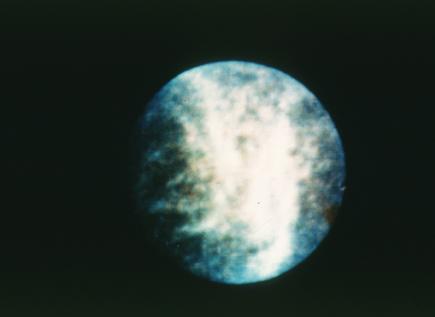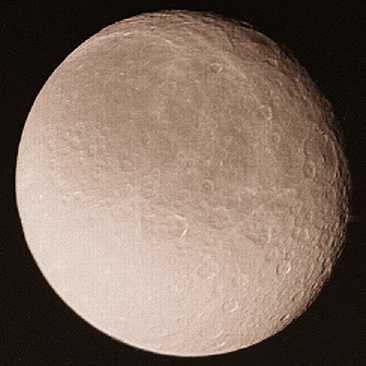

Rhea:
Rhea is the largest airless satellite of Saturn. It was discovered in 1672 by Giovanni Cassini. Rhea is an icy body with a density of 1.33 gm/cm3. The low density indicates that it is composed of a rocky core taking up less than one-third of the moon's mass, with the rest composed of water-ice. Rhea is somewhat similar to Dione. They both have similar composition, albedo features, varied terrain and synchronous rotations. The temperature on Rhea is -174C with illumation from the Sun and between -200C and -220C (-328F and -364F) in the shade.

Rhea is heavily cratered with bright wispy markings. Its surface can be divided into two geologically different areas based on crater density. The first area contains craters which are larger than 40 kilometers in diameter. The second area, in parts of the polar and equatorial regions, has craters under 40 kilometers in diameter. This suggests that a major resurfacing event occurred some time during its formation.